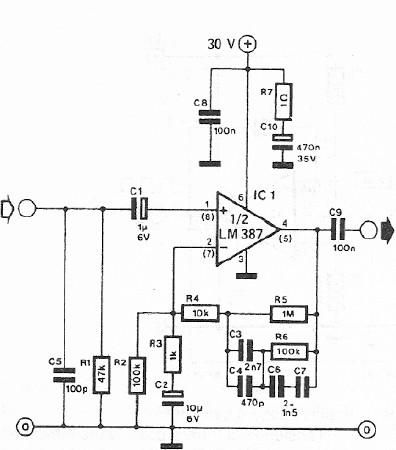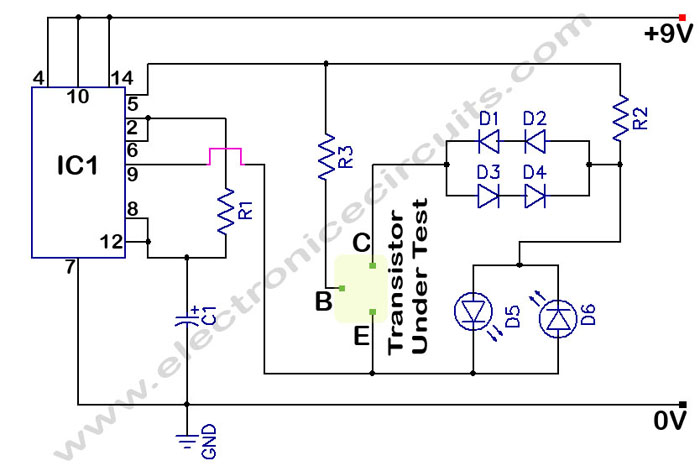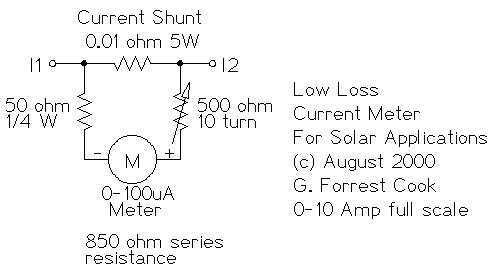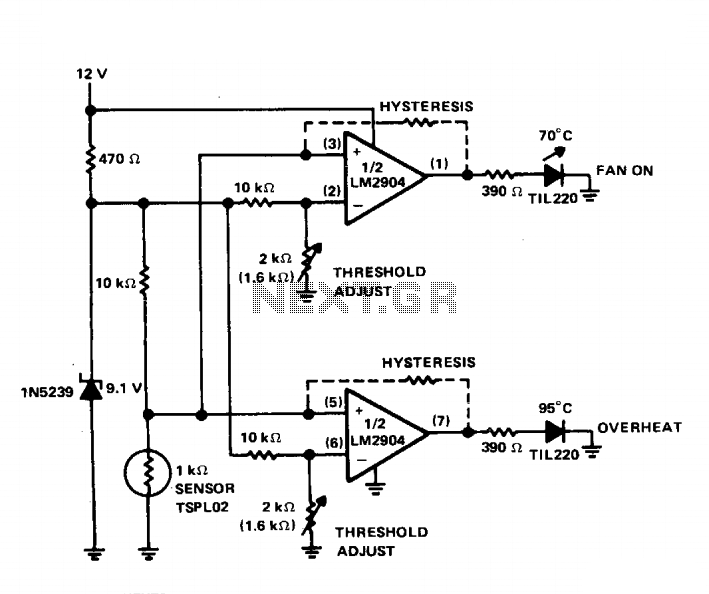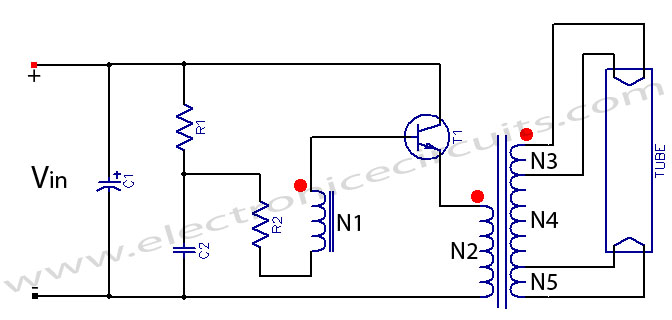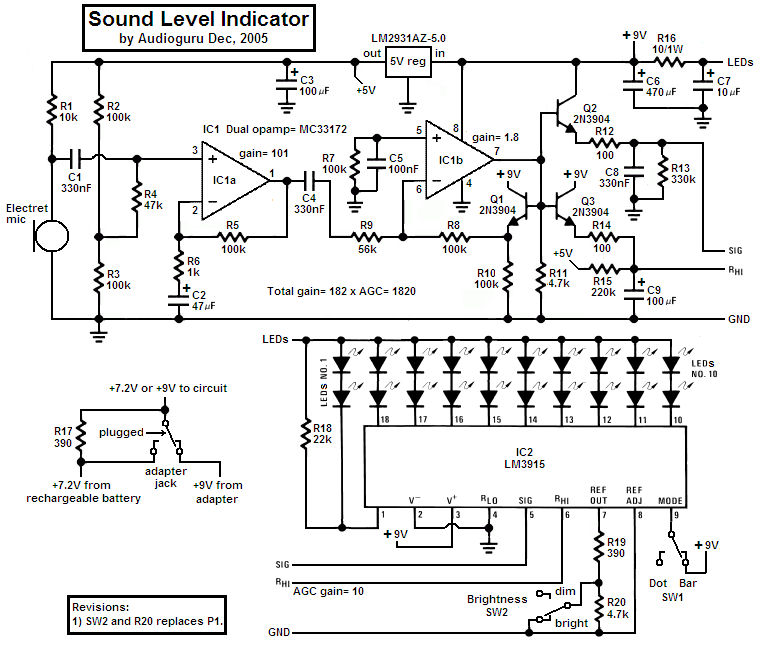
Small current amplifier circuit
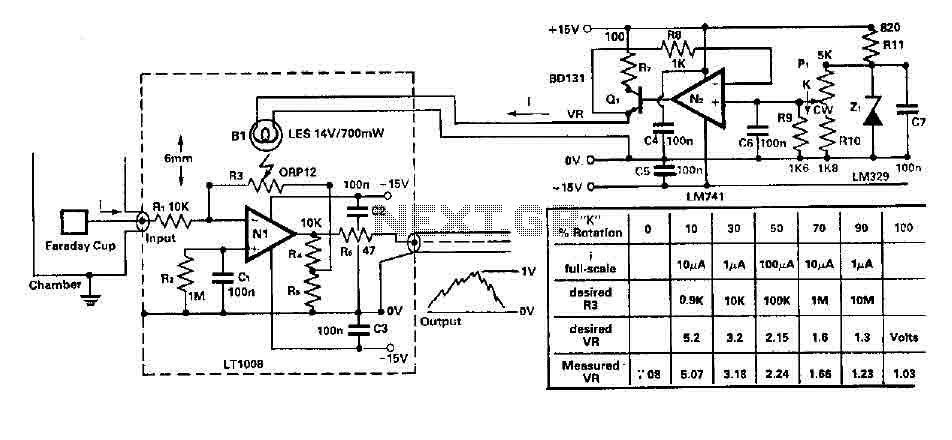
To amplify small current signals as an electron collector inside a vacuum chamber, it is advantageous for reasons related to noise and bandwidth to have a "head-amplifier" connected to the chamber. Operational amplifier 1 is a precision device featuring bipolar bias current and low offset voltage, which contributes to low noise levels, thereby facilitating the use of a 100:1 attenuator. The resistor R3 can vary from more than 10 million ohms to less than 1 k ohm, allowing the nominal value of the output signal, ranging from 0 to 1 V peak, to correspond to input current levels from 1 nA to 10 pA.
The circuit design incorporates a head-amplifier configuration that is essential for enhancing the sensitivity of measurements conducted within a vacuum chamber environment. The operational amplifier (Op Amp) utilized in this setup is characterized by its precision, which is critical for applications requiring minimal signal distortion and high fidelity. The bipolar bias current feature ensures that the amplifier maintains a stable operating point, while the low offset voltage minimizes the introduction of noise, enhancing the overall signal integrity.
The implementation of a 100:1 attenuator is a strategic choice that allows the circuit to handle a wide dynamic range of input signals without saturating the amplifier. This is particularly important when dealing with very small current signals, as is the case in this application. The attenuator effectively scales down the input signal, making it more manageable for the Op Amp to process accurately.
Resistor R3 plays a pivotal role in the circuit, as its variable resistance allows for significant flexibility in adjusting the gain of the amplifier stage. The ability to vary R3 from over 10 million ohms to less than 1 k ohm enables the circuit to accommodate a broad spectrum of input current levels. Specifically, the output signal can be finely tuned to reflect input currents ranging from 1 nA to 10 pA, corresponding to a peak output voltage of up to 1 V. This capability is crucial for applications that require precise measurements of low-level currents, ensuring that the system can adapt to different measurement scenarios while maintaining high accuracy and low noise performance.
In summary, this circuit design effectively combines a precision operational amplifier with a variable resistor to create a robust head-amplifier system suitable for amplifying small current signals in a vacuum chamber environment, thereby enhancing measurement capabilities in sensitive electronic applications.To amplify the small current signals as an electron collector inside a vacuum chamber, it is convenient for reasons of noise and bandwidth to have a "head-amplifier" attached to the chamber. Op N-amp 1 is a precision device with bipolar bias current and low offset voltage (1)-and the noise low, which allows the 100:1 attenuator comments to be used..
The resistor R3 can vary by more than 10 million to less than 1 k, and so the nominal value from 0 to 1 V output signal peak corresponds to the input current ranges from 1 nA to 10 pA. 🔗 External reference
The circuit design incorporates a head-amplifier configuration that is essential for enhancing the sensitivity of measurements conducted within a vacuum chamber environment. The operational amplifier (Op Amp) utilized in this setup is characterized by its precision, which is critical for applications requiring minimal signal distortion and high fidelity. The bipolar bias current feature ensures that the amplifier maintains a stable operating point, while the low offset voltage minimizes the introduction of noise, enhancing the overall signal integrity.
The implementation of a 100:1 attenuator is a strategic choice that allows the circuit to handle a wide dynamic range of input signals without saturating the amplifier. This is particularly important when dealing with very small current signals, as is the case in this application. The attenuator effectively scales down the input signal, making it more manageable for the Op Amp to process accurately.
Resistor R3 plays a pivotal role in the circuit, as its variable resistance allows for significant flexibility in adjusting the gain of the amplifier stage. The ability to vary R3 from over 10 million ohms to less than 1 k ohm enables the circuit to accommodate a broad spectrum of input current levels. Specifically, the output signal can be finely tuned to reflect input currents ranging from 1 nA to 10 pA, corresponding to a peak output voltage of up to 1 V. This capability is crucial for applications that require precise measurements of low-level currents, ensuring that the system can adapt to different measurement scenarios while maintaining high accuracy and low noise performance.
In summary, this circuit design effectively combines a precision operational amplifier with a variable resistor to create a robust head-amplifier system suitable for amplifying small current signals in a vacuum chamber environment, thereby enhancing measurement capabilities in sensitive electronic applications.To amplify the small current signals as an electron collector inside a vacuum chamber, it is convenient for reasons of noise and bandwidth to have a "head-amplifier" attached to the chamber. Op N-amp 1 is a precision device with bipolar bias current and low offset voltage (1)-and the noise low, which allows the 100:1 attenuator comments to be used..
The resistor R3 can vary by more than 10 million to less than 1 k, and so the nominal value from 0 to 1 V output signal peak corresponds to the input current ranges from 1 nA to 10 pA. 🔗 External reference
Warning: include(partials/cookie-banner.php): Failed to open stream: Permission denied in /var/www/html/nextgr/view-circuit.php on line 713
Warning: include(): Failed opening 'partials/cookie-banner.php' for inclusion (include_path='.:/usr/share/php') in /var/www/html/nextgr/view-circuit.php on line 713
